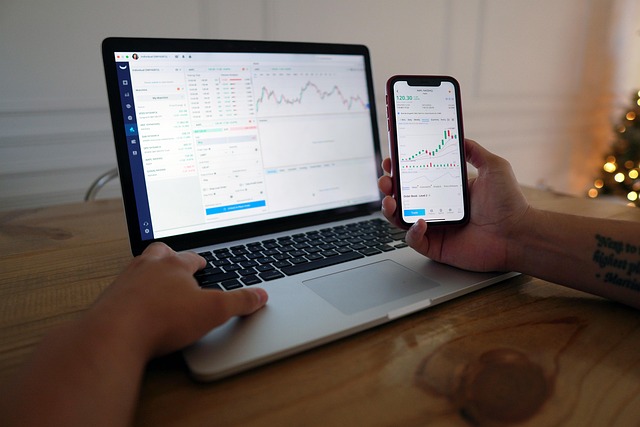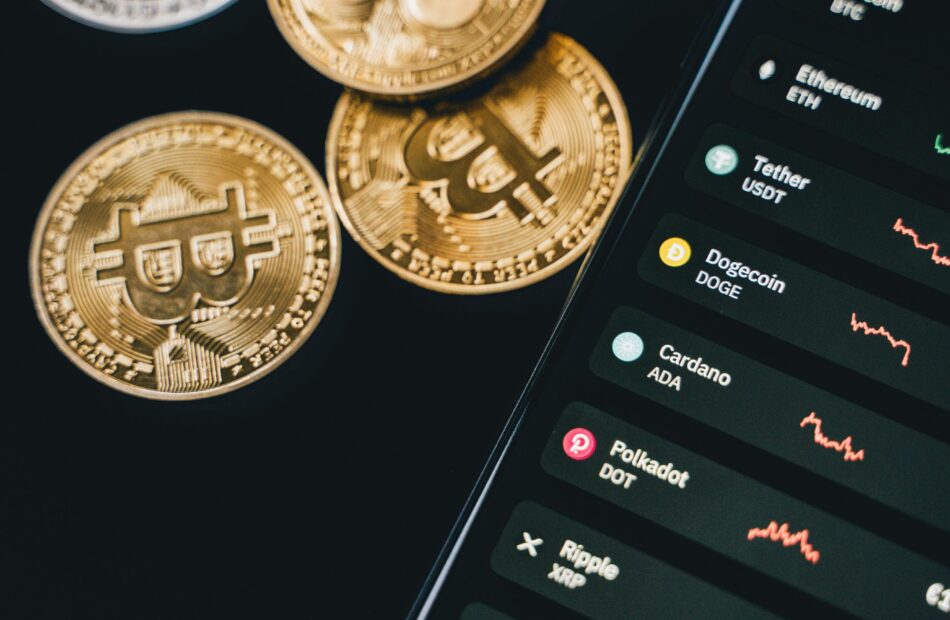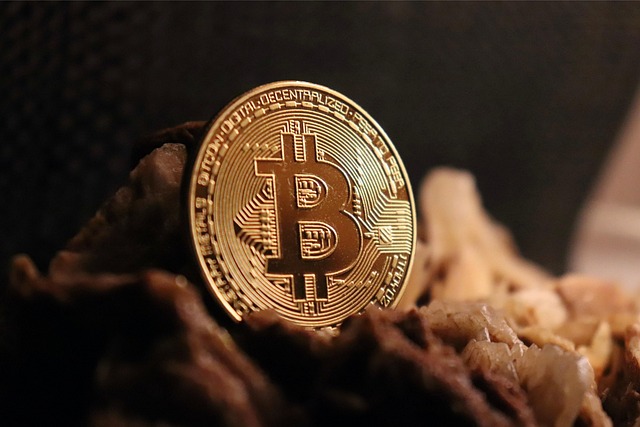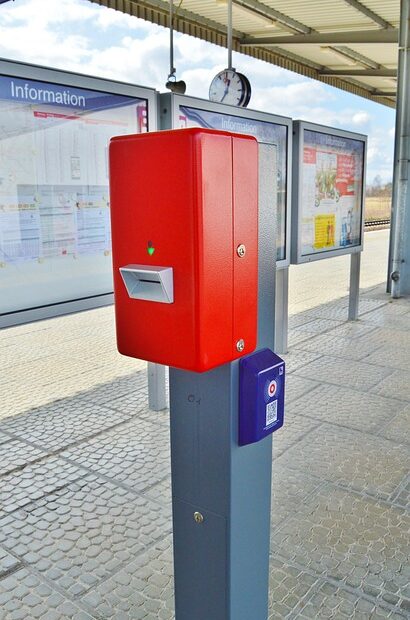Kalshi traders place the odds of US recession in 2025 at over 61%
Traders on the Kalshi prediction market place the odds of a US recession in 2025 at 61%, following the sweeping tariff order signed by President Donald Trump on April 2.Kalshi uses the standard criteria of a recession, two business quarters of negative gross domestic product (GDP) growth, as reported by the United States Department of Commerce.Odds of a US recession on the prediction platform have nearly doubled since March 20 and mirror the current 2025 US recession odds on Polymarket, which traders on the platform currently place at 60%.The macroeconomic outlook for 2025 deteriorated rapidly following US President Donald Trump’s sweeping tariff order and the ensuing sell-off in capital markets, sparking fears of a prolonged bear market.Odds of US recession in 2025 top 60% on the Kalshi prediction market. Source: kalshiRelated: Bitcoin bulls defend $80K support as ‘World War 3 of trade wars’ crushes US stocksTrump’s executive order throws markets in disarrayThe US President’s executive order established a 10% baseline tariff rate for all countries and different “reciprocal” tariff rates on trading partners with existing tariffs on US import goods.Trump’s announcement triggered an immediate stock market sell-off, wiping away over $5 trillion in shareholder value in a matter of days.Fears of a recession continue to grow as market analysts warn of a potentially protracted trade war that negatively impacts global markets and suppresses risk asset prices, including cryptocurrencies.Meanwhile, President Trump has expressed confidence that the tariffs will strengthen the US economy long-term and correct any trade imbalances.”The markets are going to boom,” the President said on April 3, describing the current market sell-off as an expected part of the process.The stock market sell-off continues as stocks shed trillions in shareholder value. Source: TradingViewAsset manager Anthony Pompliano recently speculated that President Trump deliberately crashed markets to bring down interest rates.Pompliano cited the reduction in 10-year US Treasury bonds as evidence that the President’s strategy of forcing a recession to impact rates is working.Interest rates on 10-year US Treasury bonds declined from approximately 4.66% in January 2025 to just 4.00% on April 5. President Trump is also pressuring Federal Reserve chairman Jerome Powell to lower short-term interest rates.”This would be a perfect time for Fed chairman Jerome Powell to cut interest rates,” Trump wrote in an April 4 Truth Social post.Magazine: Financial nihilism in crypto is over — It’s time to dream big again
Mixed-martial arts champion Conor McGregor launches memecoin
Mixed-martial arts (MMA) champion Conor McGregor launched a memecoin called “REAL” on April 5, which will reportedly feature staking rewards and voting rights for token holders.The token was launched through a sealed-bid auction to eliminate snipers and bots hijacking the token launch and occurred in collaboration with the Real World Gaming decentralized autonomous organization (DAO).The auction will take place from April 5-6. In a statement shared with Cointelegraph, McGregor touted the launch as a fair memecoin offering:”This is not some celebrity-endorsed bullshit token, it is a REAL game changer that will change the crypto ecosystem as well as make REAL change in the world. The sealed-bid auction is the new way of launching a token to prevent rug pulls and snipers.”This is about transparency — we are showing the world how it is done with integrity,” McGregor continued.Source: Conor McGregorThe memecoin narrative peaked following the launch of the TRUMP memecoin by US President Donald Trump. However, savvy traders continue hunting memecoins, keeping the market alive.This article does not contain investment advice or recommendations. Every investment and trading move involves risk, and readers should conduct their own research when making a decision.Related: Ghibli memecoins surge as internet flooded with Studio Ghibli-style AI images
Smart money still hunting for memecoins despite end of ‘supercycle’
The most successful cryptocurrency traders are still chasing quick profits in memecoins, despite signs that the broader “supercycle” for the speculative assets may be winding down. The shift follows recent disappointment tied to memecoin launches associated with US President Donald Trump.The industry’s most successful cryptocurrency traders by returns — tracked as “smart money” traders on Nansen’s blockchain intelligence platform — continue hunting for quick memecoin returns.While growing stablecoin holdings show increased caution, smart money remains open to speculative plays, according to Nicolai Sondergaard, a research analyst at Nansen.“There was the recent meme surge and smart money is always happy to capitulate on that. But they’re also happy to rotate out of these quickly as well,” he said during Cointelegraph’s Chainreaction live show on X.“The recent meme frenzy was just a fun play they worked on, while the broader market is sorting out the direction because memecoins aren’t necessarily affected by the same macroeconomy as Bitcoin and Ethereum,” he added.Related: Bitcoin holds firm as stocks lose $5T in record Trump tariff sell-offThe analyst’s insights came a week after a savvy trader turned an initial investment of just $2,000 into $43 million with the popular Pepe (PEPE) cryptocurrency, Cointelegraph reported on March 30.Savvy Pepe trader, transactions. Source: LookonchainHowever, the trader didn’t manage to sell the top but still made a realized profit of over $10 million, despite Pepe’s over 70% decline from its all-time high.Related: Trump family memecoins may trigger increased SEC scrutiny on cryptoTrump token launch may have ended memecoin “supercycle”The launch of the Official Trump (TRUMP) memecoin on Jan. 18 may have signaled the end of the memecoin “supercycle.”“Pump.fun has been synonymous with the “memecoin supercycle,” as it accounts for over 70% of tokens launched on Solana, according to a Binance research report shared with Cointelegraph.Pump.fun usage metrics. Source: Binance research reportThe memecoin launchpad’s weekly usage metrics peaked on the week of Trump’s inauguration and have since declined. Total active wallets on Pump.fun fell from 2.85 million on the week of Jan. 20 to just 1.44 million as of March 31.The decline is mainly attributed to a decay in investor sentiment, a Binance spokesperson told Cointelegraph, adding:“Market sentiment also appears to have shifted amid unverified reports of insider trading linked to subsequent high-profile tokens such as $MELANIA and $LIBRA.”“Broader macroeconomic uncertainty, including volatility driven by global tariff policies, may have further dampened speculative appetite for memecoins more generally,” the spokesperson said.TRUMP/USD, all-time chart. Source: CoinMarketCapMeanwhile, the TRUMP token is down more than 87% from its peak of $75.35, reached on Jan. 19. The token fell over 8% in the past week, CoinMarketCap data shows.Magazine: BTC’s ‘reasonable’ $180K target, NFTs plunge in 2024, and more: Hodler’s Digest Jan 12–18
Bitcoin DeFi surge may boost BTC demand and adoption — Binance
The value locked in Bitcoin-based decentralized finance (BTCFi) has surged by more than 2,700% over the past year, potentially transforming Bitcoin from a passive store of value into a productive, yield-bearing asset, according to new research from Binance.BTCFi is a new technological paradigm that aims to bring decentralized finance capabilities to Bitcoin’s base layer. It is one of the fastest-growing crypto sectors, reaching a total value locked (TVL) of over $8.6 billion.The growing value of BTCFi, “along with potential interest rate cuts, may reinforce positive sentiment for Bitcoin in the medium and long term,” Binance Research wrote in a report shared with Cointelegraph.Bitcoin DeFi, total value locked, 2025 chart. Source: Binance ResearchIf the BTCFi sector’s growth trajectory continues, it could open up “new opportunities for Bitcoin holders to generate yield through lending, liquidity provision, and other DeFi mechanisms,” a Binance spokesperson told Cointelegraph, adding:“This may contribute to a shift in how BTC is perceived — from a passive store-of-value to a productive on-chain asset. While it’s too early to determine the full impact, these evolving use cases could support broader adoption and, over time, strengthen demand.”Related: Bitcoin price can hit $250K in 2025 if Fed shifts to QE: Arthur HayesInterest in BTCFi surged after April 2024’s Bitcoin halving, which introduced the Runes protocol, the first fungible token standard on the Bitcoin blockchain.Several Bitcoin-native projects have helped accelerate the trend. Babylon introduced Bitcoin (BTC) staking for the first time in the network’s history, enabling holders to earn passive income from their assets.Hermetica launched the first Bitcoin-backed synthetic dollar, USDh, which debuted with a 25% yield for investors.Related: Crypto trader turns $2K PEPE into $43M, sells for $10M profitBTC long-term holders resume Bitcoin accumulationLong-term Bitcoin holders have restarted their BTC accumulation after the BTC supply held by long-term holders bottomed in February.BTC supply held by long-term holders. Source: Glassnode, Binance ResearchLong-term holders are wallets that have been holding BTC for at least 155 days. Growing accumulation from long-term holders has reduced the available Bitcoin supply on exchanges, which may eventually lead to a supply shock-driven price rally.The growing accumulation trend among long-term holders aligns with a “significant period of adoption for Bitcoin,” due to the establishment of the US strategic Bitcoin reserve and growing institutional interest, according to the research report.Source: Margo MartinOn March 7, US President Donald Trump signed an executive order to create a strategic Bitcoin reserve using BTC seized from government criminal cases.Trump signed the historic Bitcoin reserve order a day ahead of hosting the first White House Crypto Summit, which received mixed reactions from the crypto community.Magazine: Bitcoiner sex trap extortion? BTS firm’s blockchain disaster: Asia Express
Pre-seed crypto startup deals have grown 767% since 2021: Report
The number of pre-seed funding rounds for Bitcoin (BTC) startup companies has grown by 767% since 2021, according to a report from venture capital firm Trammell Venture Partners (TVP).Bitcoin pre-seed transactions increased 50% year-over-year in 2024, with a 27.5% year-over-year increase in the number of startup companies funded.Christopher Calicott, TVP’s managing director, attributed the increased deals to the robust security of the BTC network:”Many entrepreneurs across crypto are revisiting the Bitcoin stack as the long-term place to build their companies. It makes perfect sense: The objectively most secure, reliable, and decentralized blockchain is the obvious platform of choice.”However, the capital raised in Bitcoin pre-seed funding rounds declined by over 22% in 2024, with the median funding round size and the median startup valuation steadily declining from 2021 to 2023. Median valuations for pre-seed Bitcoin startups fail to reclaim 2021 levels. Source: Trammell Venture PartnersThe value of funding rounds reclaimed some lost ground in 2024 but failed to reach highs established during the previous bull cycle in 2021, primarily due to unclear crypto regulations in the United States under the previous Securities and Exchange Commission (SEC) leadership.More recently, macroeconomic uncertainty due to fears of a prolonged trade war, relatively high interest rates, and the possibility of a recession in the United States have also eroded the risk appetite for speculative assets like crypto.Total number of funding deals and unique Bitcoin startup companies has steadily risen since 2021. Source: Trammell Venture PartnersRelated: VC Roundup: 8-figure funding deals suggest crypto bull market far from overCrypto VCs don’t expect 2025 funding to reach 2021-2022 levelsIn January, Deng Chao, CEO of institutional asset manager HashKey Capital, told Cointelegraph that pro-crypto regulations in the United States would increase VC investment in the sector in 2025.However, the executive warned that macroeconomic uncertainty and geopolitical turmoil could increase price volatility and disrupt the trend brought on by positive regulatory tailwinds.On April 2, US President Donald Trump signed a sweeping tariff order establishing a 10% baseline tariff on import goods from all countries and a regime of reciprocal trade tariffs on trading partners that sent financial markets tumbling.Crypto markets took a nosedive amid trade war fears and macroeconomic uncertainty. Source: CoinMarketCapRisk-on assets such as stocks and cryptocurrencies typically suffer during trade wars and macroeconomic uncertainty, as investors flee risk assets for safer alternatives such as cash, government securities, and durable commodities.Venture capital firm Haun Ventures invested $1.5 billion into crypto firms in 2022 but recently announced it seeks to raise only $1 billion in the first half of 2025, citing changed market conditions.Similarly, analysts at Galaxy Digital also predicted a 50% year-over-year rise in VC-led crypto investments in 2025 but said that VC funding will fail to reach highs established in 2021–2022.Magazine: Financial nihilism in crypto is over — It’s time to dream big again
US sanctions 8 crypto wallets tied to Garantex exchange and Yemeni Houthis
The US Treasury Department sanctioned eight cryptocurrency wallet addresses linked to Russian crypto exchange Garantex and the Yemeni political and military organization the Houthis.The United States Office of Foreign Assets Control (OFAC) sanctioned eight crypto addresses that data from blockchain forensic firms Chainalysis and TRM Labs had linked to the organizations. Two are deposit addresses at major crypto platforms, while the other six are privately controlled.Visualization of transaction flow related to OFAC sanctions. Source: ChainalysisThe addresses in question reportedly moved nearly $1 billion worth of funds linked to sanctioned entities. Most of the transactions funded Houthi operations in Yemen and the Red Sea region.Slava Demchuk, a crypto-focused money laundering specialist and United Nations Office on Drugs and Crime consultant told Cointelegraph that “the inclusion of Houthi-linked wallets reflects a broader recognition of crypto’s role in geopolitical conflicts and terrorism financing.” He added:“The implications are far-reaching — compliance frameworks must adapt swiftly, attribution efforts will intensify, and decentralized platforms may face increased scrutiny.“Demchuk highlighted that the situation reshapes the regulatory landscape. According to him, crypto “is now firmly within the scope of international security.Who are the Houthis?The Houthis, also known as Ansar Allah, are a Yemeni political and armed movement that emerged from the Zaidi Shia community. Originating as a revivalist and reformist group, they later became a major force in Yemen’s ongoing conflict.Related: US DOJ says it seized Hamas crypto meant to finance terrorismIn recent years, the Houthis have engaged in attacks against both military and civilian vessels in the Red Sea with missiles and drones. In January, US President Donald Trump designated the group as a foreign terrorist organization.The announcement noted that “the Houthis’ activities threaten the security of American civilians and personnel in the Middle East, the safety of our closest regional partners, and the stability of global maritime trade.” The group was recently struck by a US bombing campaign.Related: Binance claims’ no special relationship’ with Hamas, argues to dismiss lawsuitGarantex: Russia’s crypto laundromatGarantex is a Russian crypto exchange that was sanctioned and shut down in early March after purportedly helping money-laundering efforts. At the time, Tether — the leading stablecoin operator and issuer of USDt — froze $27 million in USDt on the platform, forcing it to halt operations.The platform has reportedly shifted millions of dollars as it sought to reboot under its new brand, “Grinex.” In mid-March, officials with India’s Central Bureau of Investigation announced the arrest of Lithuanian national Aleksej Bešciokov, who was alleged to have operated the cryptocurrency exchange Garantex. The arrest of the alleged Garantex founder was based on US charges of conspiracy to commit money laundering, conspiracy to operate an unlicensed money-transmitting business and conspiracy to violate the International Emergency Economic Powers Act.Magazine: Financial nihilism in crypto is over — It’s time to dream big again
Hackers are selling counterfeit phones with crypto-stealing malware
Cybersecurity firm Kaspersky says it has uncovered thousands of counterfeit Android smartphones sold online with preinstalled malware designed to steal crypto and other sensitive data. The Android devices are sold at reduced prices, cybersecurity firm Kaspersky Labs said in an April 1 statement, but are riddled with a version of the Triada Trojan that infects every process and gives the attackers “almost unlimited control” over the device. Dmitry Kalinin, a cybersecurity expert at Kaspersky Labs, said that once the trojan grants the attackers access to devices, they can steal crypto by replacing wallet addresses. “The authors of the new version of Triada are actively monetizing their efforts; judging by the analysis of transactions, they were able to transfer about $270,000 in various cryptocurrencies to their crypto wallets,” he said. “However, in reality, this amount may be larger; the attackers also targeted Monero, a cryptocurrency that is untraceable.”Among the trojan’s other capabilities are stealing user account information and intercepting incoming and outgoing texts, including two-factor authentication. The trojan penetrates smartphone firmware even before the phone reaches users, and some online sellers might not even be aware of the ticking time bomb in the device, according to Kalinin.“Probably, at one of the stages, the supply chain is compromised, so stores may not even suspect that they are selling smartphones with Triada,” he said. At this stage, Kaspersky researchers say they have found 2,600 confirmed infections through this scam in different countries, with the majority of users in Russia encountering it in the first three months of 2025. The Android devices are sold at reduced prices but are riddled with malware. Source: HovatekThe Triada malware first surfaced in 2016 and is known for targeting financial applications and messaging apps like WhatsApp, Facebook and Google Mail, according to cybersecurity firm Darktrace. It is generally delivered through malicious downloads and phishing campaigns. “The Triada Trojan has been known for a long time, and it still remains one of the most complex and dangerous threats to Android,” Kalinin said. The best way to avoid falling victim to this scam is to only purchase devices from legitimate distributors and install security solutions immediately after purchase, according to Kaspersky Labs. Other firms have also been raising the alarm over new forms of malware targeting crypto users. Related: Crypto exploit, scam losses drop to $28.8M in March after February spikeCybersecurity firm Threat Fabric said in a March 28 report it found a new family of malware that can launch a fake overlay to trick Android users into providing their crypto seed phrases as it takes over the device.On March 18, tech giant Microsoft said it found a new remote access trojan (RAT) that targets crypto held in 20 wallet extensions for the Google Chrome browser. Magazine: Mystery celeb memecoin scam factory, HK firm dumps Bitcoin: Asia Express
Curve Finance clocks $35B trading volume in Q1 2025
Curve Finance, a decentralized lending protocol and exchange, notched record-breaking trading volumes of nearly $35 billion in the first quarter of 2025, a spokesperson for the protocol told Cointelegraph. Trading volumes increased more than 13% from the first quarter of 2024, largely due to a surge in transactions, from around 1.8 million to some 5.5 million in Q1 2025, Curve said. The strong Q1 volumes come amid overall declines in the cryptocurrency market, with the total market capitalization of cryptocurrencies dropping by more than 20% in the year-to-date as of March 31, according to data from CoinGecko.Curve’s total value locked (TVL) over time. Source: DefiLlamaRelated: Curve Finance launches ‘Savings crvUSD’ yield-bearing stablecoinChanging DeFi LandscapeLaunched in 2020, Curve has taken numerous steps in the past year to keep pace with the changing decentralized finance (DeFi) landscape.In June 2024, Curve adopted crvUSD, its stablecoin, for fee distribution to tokenholders, replacing an older model that paid holders in shares of the 3crv liquidity pool.In November, Curve partnered with Elixir, a blockchain network, to help onboard BlackRock’s tokenized money market fund, BUIDL, to DeFi. By the end of 2025, Curve plans to consolidate its lending markets into a single user interface and provide borrowers with more time to close positions before they are liquidated, it told Cointelegraph. Curve founder Michael Egorov said in March that he expects many decentralized exchanges (DEXs) to evolve into bespoke platforms for stablecoins pegged to various currency denominations. “Exchanges between stablecoins of different denominations like the euro, US dollar, and others are not yet properly solved. How to provide liquidity without losing money, but while earning a lot of money, is kind of an open question that I think will be solved soon,” Egorov said.Despite the rise in transactions, the total value locked (TVL) on Curve’s platform is approximately $1.8 billion as of April 2, according to data from DefILlama, down from highs of roughly $2.5 billion at the start of the year. Curve’s native token, Curve DAO (CRV), has a market capitalization of approximately $640 million at this writing, marking a more than 40% decline in the year-to-date, according to data from Cointelegraph.Related: BTC miners adopted ‘treasury strategy,’ diversified business in 2024: Report
Bitcoin price on verge of breaking 10-week downtrend — Is $90K BTC next?
Bitcoin’s (BTC) price is off to a swift start in Q2, rallying by 5.53% to an intraday high of $87,333 on April 2. Currently, Bitcoin is emerging from a ten-week downtrend that began on Jan. 20 when the price peaked at $110,000. A decisive close above the trendline might lead to continued bullish momentum for Bitcoin in the coming days.Bitcoin 1-day chart. Source: Cointelegraph/TradingViewBitcoin spot traders drive the rallyThroughout March, spot traders on Binance and Coinbase held opposite stances in the market. Binance traders were aggressive BTC sellers, while Coinbase showed significant spot bids around the $80,000 price level. This dynamic contributed to the sideways price action during the majority of March. Fast forward to April, and spot traders on major exchanges have collectively turned bullish over the past three days. Binance, Coinbase spot buyers data. Source: Aggr.tradeData from aggr.trade highlights that Coinbase and Binance spot bids are driving positive action for BTC. The buying pressure is particularly high on Coinbase, with spot bids increasing as high as $7.98 million over the past few hours. Likewise, Dom, a crypto markets analyst, pointed out that Bitcoin’s current rally is possibly due to Binance sellers tapering off. The analyst said, “BTC has been able to breathe ever since the Binance selling tapered off. We are even seeing some spot buying from them for the first time in over a week.”Related: Bitcoin breaks $86K as US tariff ‘Liberation Day’ risks 11% BTC price dipBitcoin flips key resistance at $84K to $85KFrom a technical perspective, Bitcoin has flipped an important resistance range between $84,000 and $85,000 into support. Likewise, the cryptocurrency has attained a bullish position above the 50-day, 100-day and 200-day exponentially moving averages (EMAs). Bitcoin 4-hour chart. Source: Cointelegraph/TradingViewHowever, based on the external liquidity levels between $87,700 and $88,700, which formed the previous highs, BTC prices might struggle to break this range immediately. Consolidation between the green box (as illustrated in the chart) is likely a net positive, which might fuel BTC’s $90,000 retest for the first time since March 7. On the flip side, an immediate correction to the current support at $84,000 and $85,000 could possibly discourage bulls, and short sellers might take control of price action. Bullish invalidation could be on the cards if BTC price closes below $85,000 over the next few days. With markets bracing for further market volatility ahead of President Trump’s “Liberation Day” tariffs, Bitcoin price is expected to react further during today’s White House press conference at 4 pm Eastern Time. Related: Bitcoin price can hit $250K in 2025 if Fed shifts to QE: Arthur HayesThis article does not contain investment advice or recommendations. Every investment and trading move involves risk, and readers should conduct their own research when making a decision.
DoubleZero protocol announces validator funding round
The DoubleZero Protocol, a revolutionary blockchain infrastructure network, has announced a validator funding round to sell token-purchase agreements for its native token to prospective validators. This funding round, which will be available exclusively through the CoinList platform from April 2-10, marks the first public token sale in the United States since 2019 and is only open to accredited investors.
To be eligible for the funding round, validators must currently be serving the high-throughput Solana, Celestia, Sui, Aptos, and Avalanche networks. Interested parties can submit bids declaring a per-unit token price and maximum budgets, which will be aggregated to determine the final sale price offered to participating validators.
According to Austin Federa, co-founder of the DoubleZero protocol and former Strategy lead at the Solana Foundation, this sale presents a unique opportunity for validators who are already securing the most performant and distributed blockchains. He believes that the infrastructure provided by DoubleZero will power the next generation of distributed systems and revolutionize the physical infrastructure layer of high-performance networks.
This funding round comes at a time of increased capital fundraising in the crypto industry, indicating potential for growth in the market. The DoubleZero Protocol is targeting a mainnet launch in the second half of 2025, following a successful $28 million fundraising round in March led by crypto venture capital firms Multicoin Capital and Dragonfly Capital.
The protocol aims to increase the speed and communication of blockchain networks by utilizing a dedicated network of fiber optics for high-speed, low-latency connectivity. This approach is similar to the shift from dial-up internet to broadband systems in the early 2000s, highlighting the potential for significant advancements in blockchain technology.
With a focus on innovation and efficiency, the DoubleZero Protocol is poised to make a significant impact on the blockchain industry. As the market continues to grow and evolve, the potential for groundbreaking developments like this is endless. Stay tuned for the mainnet launch in the second half of 2025 and the exciting advancements that will follow.










